The importance of lore and narrative is fundamental in the construction of our ontological perceptions and our capacity to conceive and actualize novel realities. The narratives that we internalize can function as mechanisms for empowerment or, conversely, instruments of subjugation under forces that exist beyond our sphere of control. To bring forth a different reality, it is imperative that we refine our capacity to articulate and envision in novel ways, fostering a spirit of mutual support throughout this transformative process. The role of the storyteller is of paramount importance, serving as a representative and illustrator of their community while concurrently navigating the complex terrain of disparate viewpoints. The narrative presented should adhere to a code of ethical responsibility, embody a spirit of radical inclusivity, and be prepared to deviate from any prevailing core agenda to embrace a multiperspectival approach, contributing to a pluriversal design ethos.
Moreover, lorecrafters should demonstrate a harmonious coordination of visual acuity, manual dexterity, and emotional intelligence — a tripartite "eye-hand-heart" equilibrium. They might consider upholding a standard of integrity and humility, using these values to actively deconstruct any hubristic incentive structures and to realign their actions with a poetic sensibility.
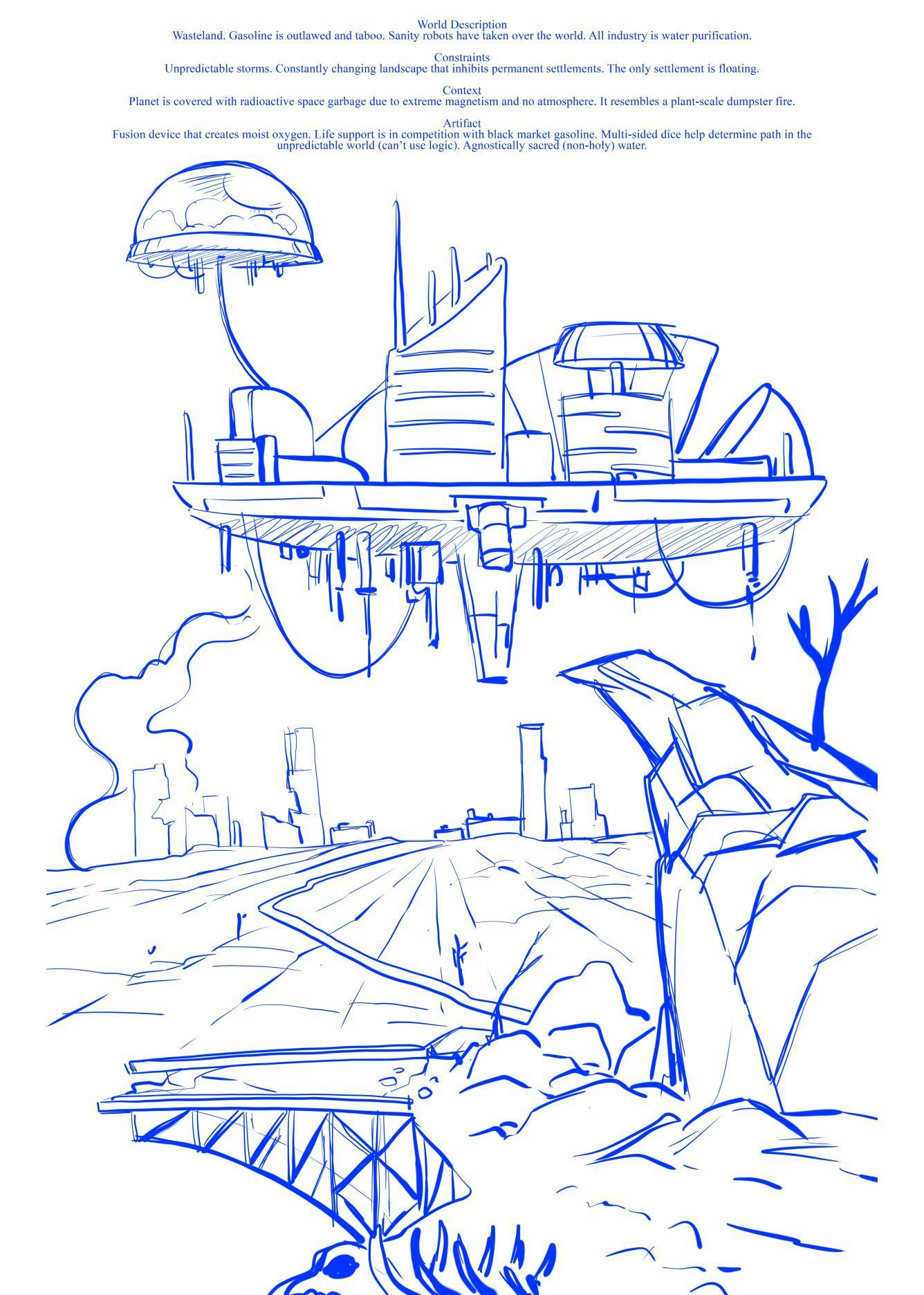
As engaged Ethereans, we must remain vigilant against universal declarations, critically interrogating their breadth of application and the extent of their inclusivity. Moloch extends beyond its historical identity as a Canaanite deity, symbolizing the principles of dispersion and entropy. It embodies a non-entity that emerges from our collective human propensity to engage in depersonalizing, grand abstractions. To counteract the influence of Moloch, our efforts must commence at the grassroots level, averting the tendency to cast others as adversaries within a cosmically scaled economic competition. We might work towards dismantling the conventional dichotomy of good versus evil, and refrain from perpetuating nationalistic, homogenizing, and centralizing identity declarations that have historically ignited conflicts. Instead of fixating on competition, we could aspire to reconceptualize our collective circumstances, channeling resources towards the establishment of sustainable practices and fostering radical cooperation among diverse selves, communities, and worlds.
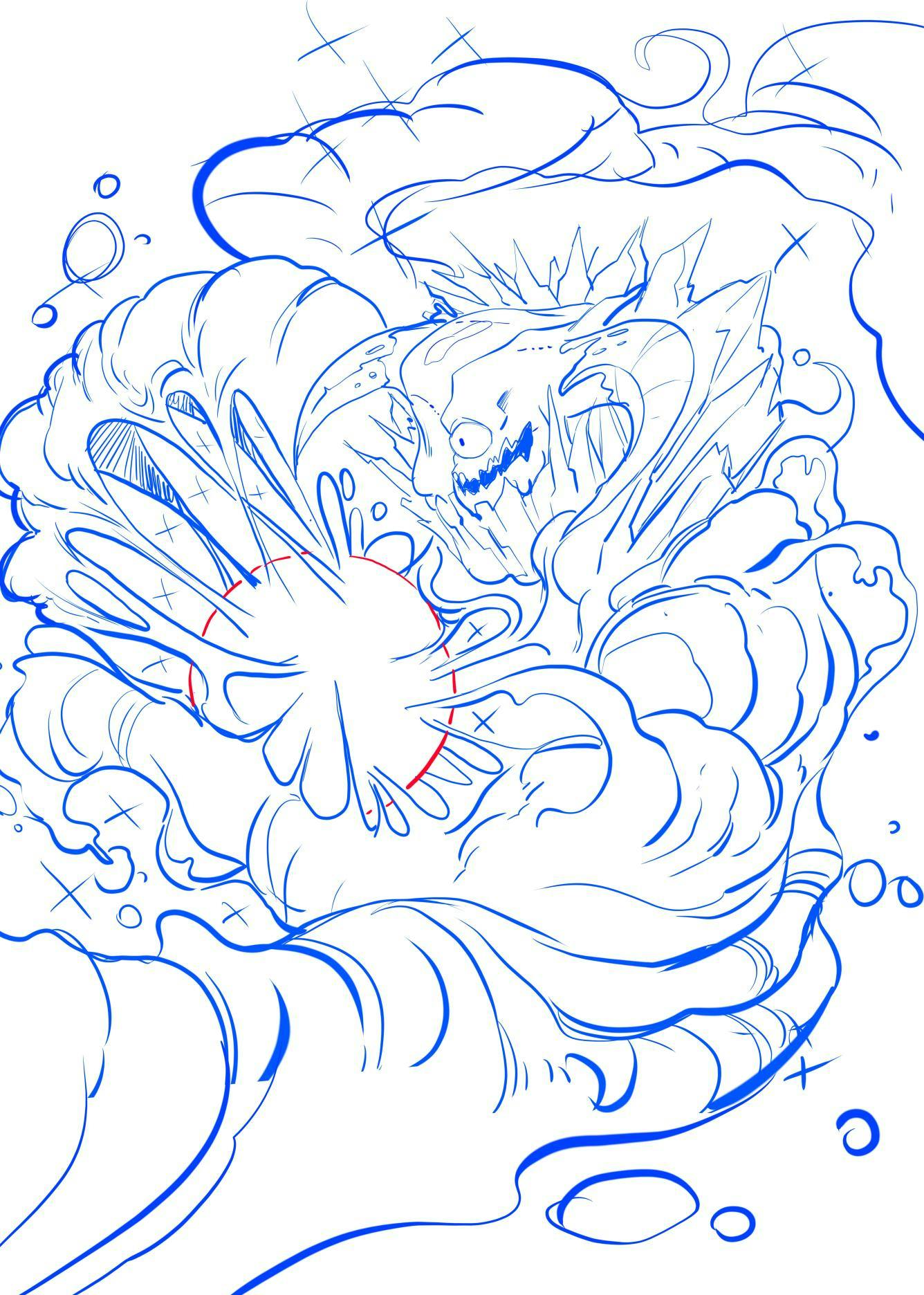
In the context of Ethereum, if a protagonist needs to be identified, this entity should function to generate, nurture, disseminate, and reinforce value for individuals, prioritizing creative production (poiesis) over political maneuvering.
In our pluriversal narratives, we seek to navigate the "expanded field" of Moloch as a mythological entity, capable of assuming a multitude of monstrous guises. At times, it might epitomize an undead, soulless proletariat, manifesting as a zombie, or conversely, it might take the form of an exploitative aristocracy or technocracy, traditionally symbolized as a vampire preying on the less privileged. Moloch might morph into a formless, slime mold-like entity, an endless, consuming flow emblematic of the unceasing expansion and consumption inherent in capitalism and industrialism. In Scott Alexander’s Meditations on Moloch, the “granite cock” obelisk of the Luxor hotel in Las Vegas is depicted as a phallocentric monolith of power, urbanity, and harsh civilization. Moreover, Moloch could manifest as a potent or suffocating atmosphere, personifying the psychological distress of solitude, the neurosis stemming from monotonous labor, and the alienation induced by both capitalism and physical isolation.
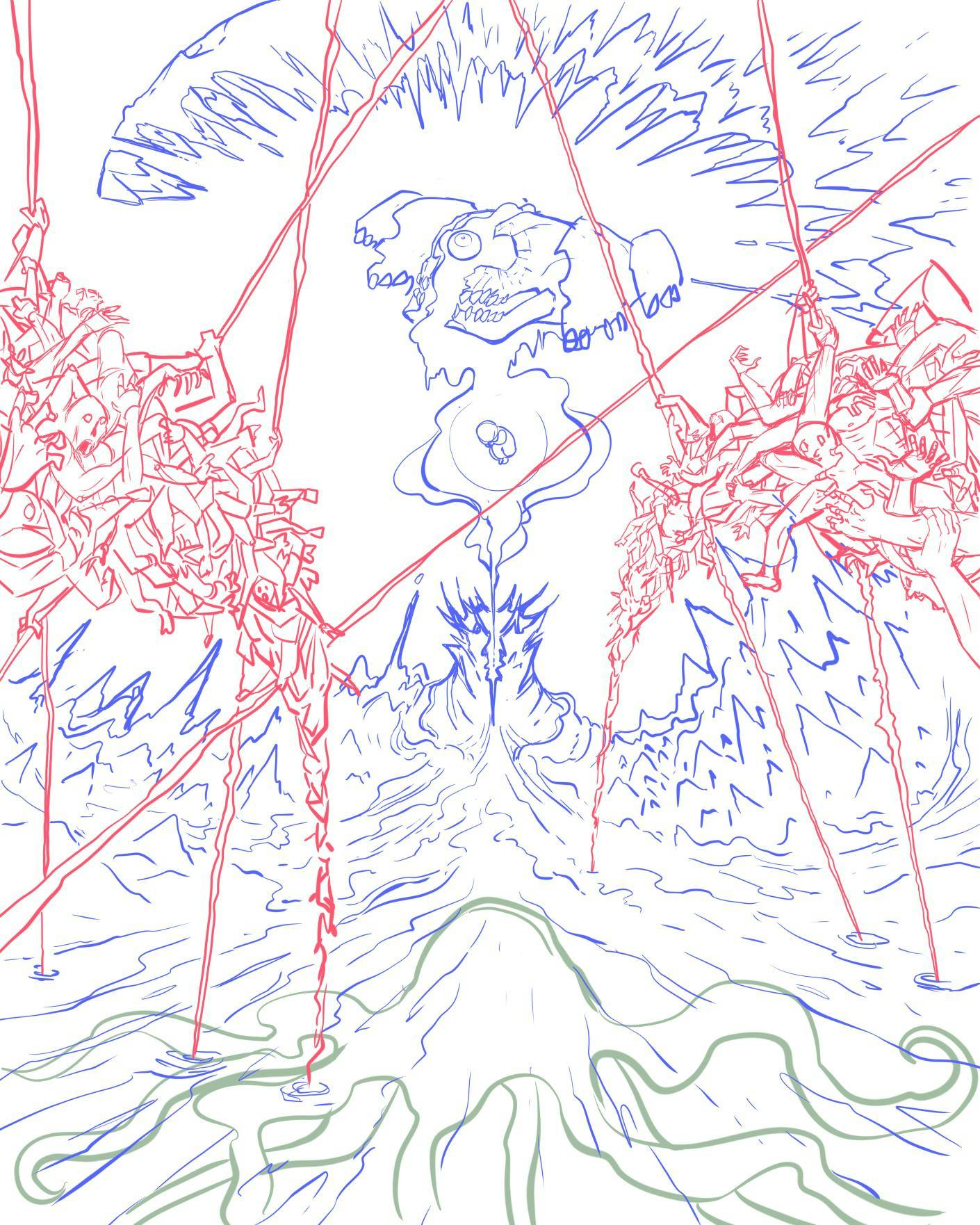
This bovine-headed demonic figure draws inspiration from the mythos surrounding the Canaanite and Carthaginian deities, notorious for the ritualistic sacrifice of infants to secure favorable outcomes in warfare and commerce. Historically, Moloch has been depicted as a cosmic furnace, kiln, or fiery gateway to a malevolent dimension, which propels progress by inciting discord. While not synonymous with capitalism, it represents a symbol of coordination failure amongst human societies, a persistent force that beguiles and lures us with deceptive appearances. Moloch is characterized by its protean nature, nebulous and dispersed, arising from the human psyche and manifesting as a psychological disturbance. It serves as an ancient, formidable deity that operates through the distortion of reality, convincing its subjects that egoistic desires are the primary driving force. In order to mitigate Moloch's influence, it is essential that we educate one another about the tragedy of the commons, multipolar traps, and existential risks. This endeavor requires the deconstruction and re-envisioning of our desires and perspectives, potentially achieved through the adoption of indigenous epistemologies or a matristic orientation as opposed to paternal or patriarchal paradigms.
The RaidGuild Mercenaries are character constructs that draw inspiration from the medieval fantasy realms depicted in popular culture phenomena such as World of Warcraft, Diablo, and Skyrim. However, these mercenaries subvert traditional archetypes by eschewing the single-minded pursuit of loot and wealth accumulation. Instead, they are devoted to principles of cooperation, collaboration, and coordination in pursuit of a shared objective. The diverse roles within RaidGuild are conceptualized as a caste system of characters, each possessing distinct attributes and vulnerabilities. This arrangement serves to illustrate the necessary interdependencies required to combat a shared adversary. The guiding ethos of these mercenaries is encapsulated in the mantra: "Better to journey far together than to travel swiftly alone." The motivations for joining the guild transcend mere material acquisition or economic ambition, instead, they are centered around a more virtuous mission. The true heroes are those who endure and remain steadfast when the boom period of the abundant market gives way to the harsh realities of (crypto) winter. It is in these moments that the guild is compelled to clearly delineate the malevolent force they stand against: a high-definition incarnation of Moloch.
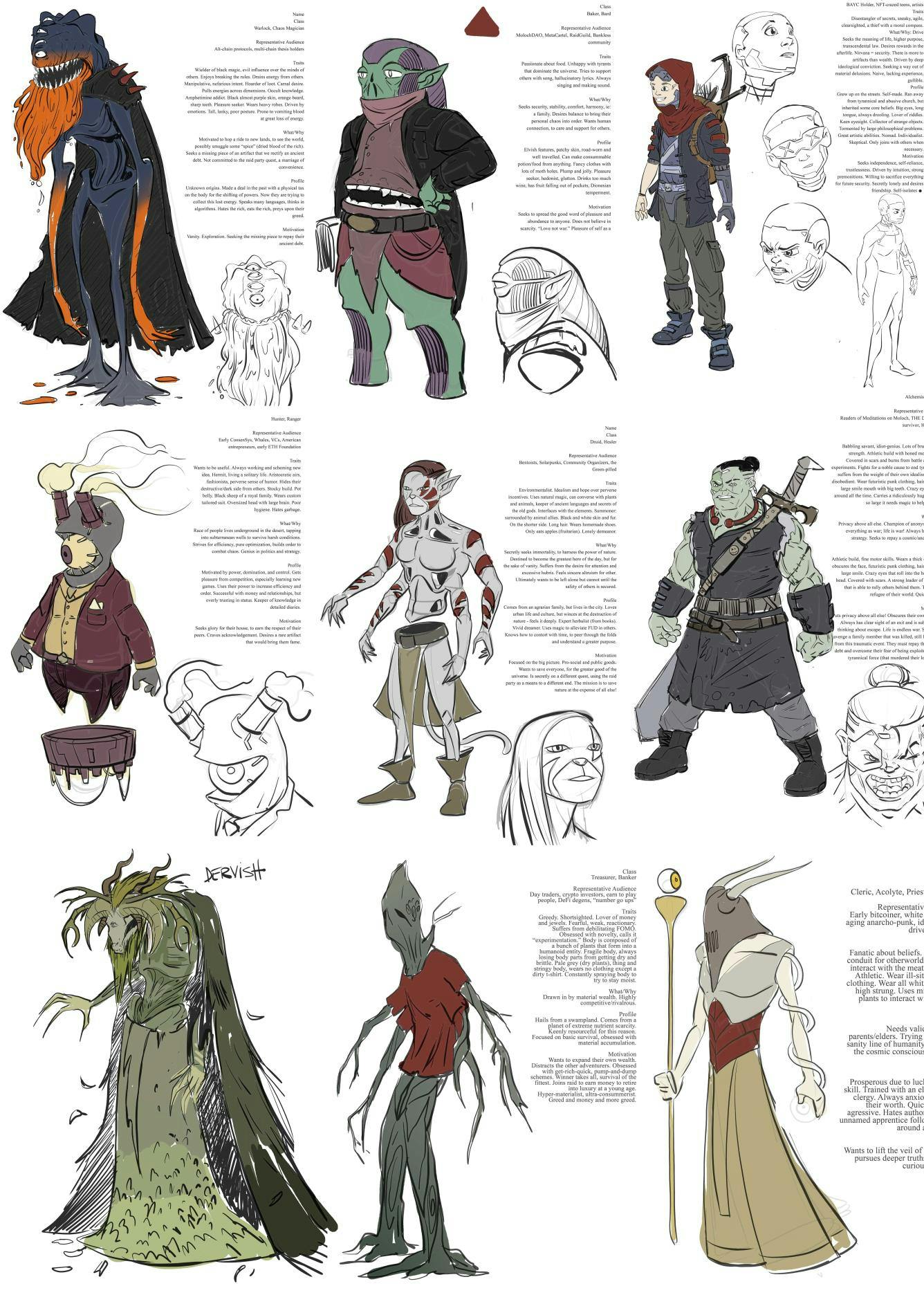
The green pill meme is an intricate conceptual construct, amalgamating elements drawn from cultural artifacts such as The Matrix films, Lewis Carroll’s Alice in Wonderland, and Gitcoin's Quadratic Lands. This construct signifies a deliberative choice of reality, coupled with an affirmation of optimistic thinking in opposition to nihilistic tendencies. The green pill functions as a metaphor for the voyage towards self-realization and commitment to the common good, serving as a symbol for a broader technocratic endeavor aimed at societal enhancement.
In the context of The Matrix, the decision to ingest the red pill is equated with the acceptance to uncover the full extent of the rabbit hole, which is connotative of the "real world"— a stark, gloomy reality where humans awaken from their enslavement and willingly surrender their physical comforts to endure suffering in the quest for loftier ideals of freedom and autonomy. The act of "red-pilling" signifies an escape from the dream of virtual space, in contrast to the blue pill's choice of remaining ensnared within the simulation, thereby opting for ignorance, illusion, dissociation, and a form of unreal or non-reality. Conversely, the green pill is imbued with the potent promise of speculative hope and the potentiality of a world superior to any historically manifested reality. This hope is not unfounded, but rather a calculated optimism, designed to dispel catastrophic thinking and to illuminate a path forward. It symbolizes the germ of hopeful thinking, the solarpunk insistence on speculative hope as the veritable or sole reality: a vision of an improved world that we consciously elect to embody and manifest, to surmount our own inherent human nature.
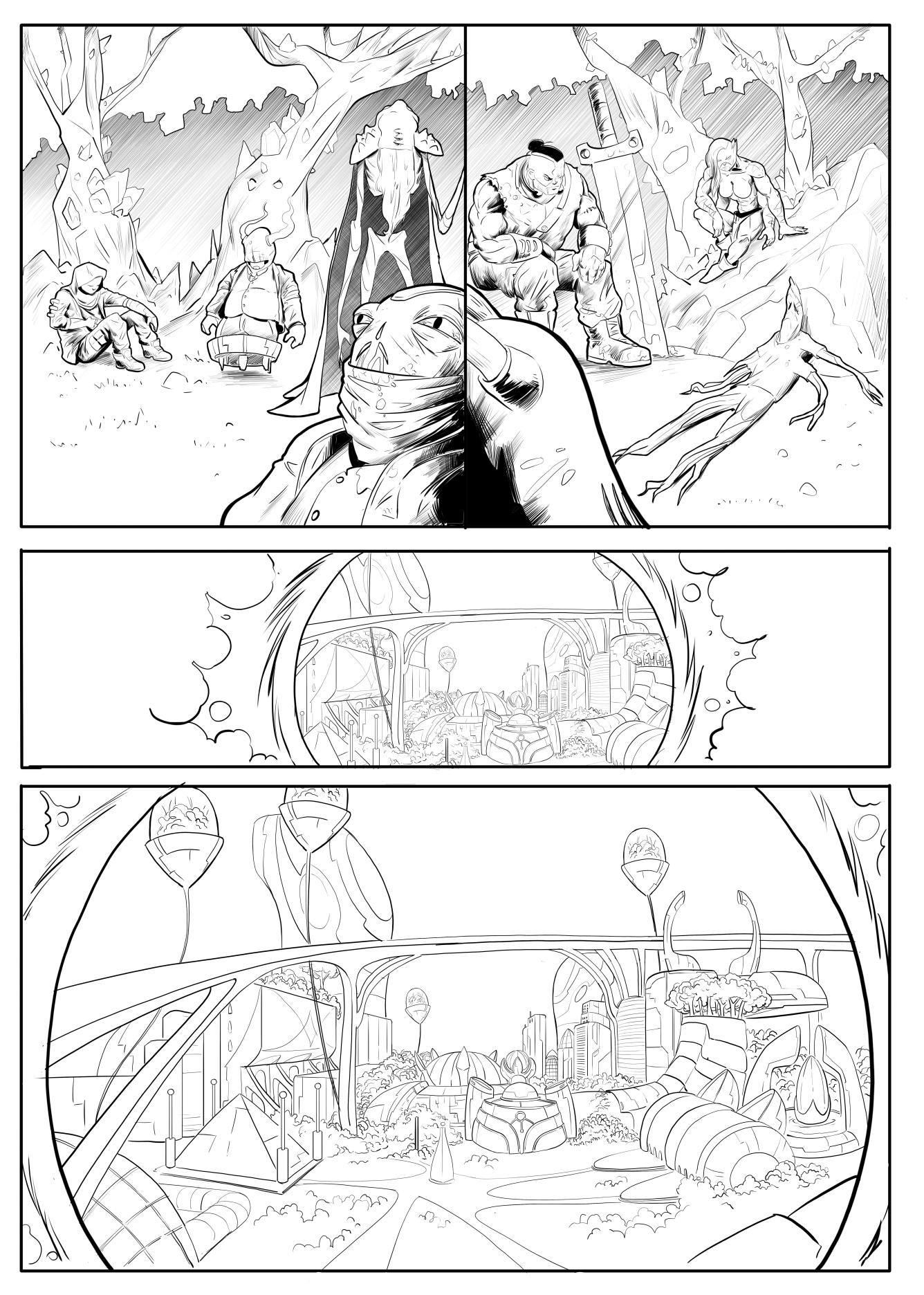
The green pill meme is complex, with associations extending to an array of works and concepts. Its utility is vested in its potential to serve as an emblem of commitment to the sustenance of public goods, whether it be through annual income, project budget, or individual transactions. The green pill can be interpreted as a reward, a pledge, or a testament of dedication to a cause greater than the self.
Within the context of the cryptocurrency community, the act of 'pilling' someone is akin to guiding them through the complex labyrinth of concepts and mechanics inherent to the field. Drawing parallels with Alice in Wonderland, Alice descends into a fantastical dreamworld, a creation of her own imagination. This world, brimming with wonder and fantasy, can be viewed as a form of delusion, juxtaposed against the 'real world' characterized by mundane adult responsibilities. Such a metaphor may possess socio-political implications, proposing Wonderland as a sanctuary offering an escape from the oppressive realities of the external world. However, it is more likely that this analogy alludes to a rite of passage marking Alice's transition from childhood to adulthood. This narrative poses pertinent questions about reintegration into one's community post the acquisition of newfound self-awareness, and the strategies to counteract pervasive selfishness within society. Here we might reference Gilles Deleuze’s reading of Lewis Carroll, from his book The Logic of Sense. Dorothea Olkowski offers her interpretation:
The underground world of Alice in Wonderland has been strongly associated with animality and embodiment. Thus the need for Alice’s eventual climb to the surface and her discovery that everything linguistic happens at that border. Yet, strangely, in spite of the claim that Alice disavows false depth and returns to the surface, it seems that it is precisely in the depths that she finally wakes from her sleepy, stupified surface state and investigates the deep structures, the rules of logic. In this investigation, Alice questions many formal structures, such as causality, identity, reference and the rules of replacement. She discovers that Wonderland does not generate consequential conduct; in fact, it generates no conduct whatsoever! In other words, when it comes to consequences, Wonderland may not be all that wonderful. Yet, we do not live in Wonderland and therefore, our actions have consequences. The question this poses is, why organize language so as to escape causal relations and why choose the little girl as emblematic of this organization?
And another from Christine Slobogin:
As each “nonsense” happens to her, Alice takes them in stride in a very calm and relatively logical manner. As each new thing occurs, the more sense the next nonsense makes in the context of this new underground world. For example, Carroll explains that “so many out-of-the-way things had happened lately, that Alice had begun to think that very few things indeed were really impossible.” As the diverse nonsense events build upon each other, it seems less odd and somehow makes more sense that the next completely different nonsense event occurs. In fact, it seems almost expected of Wonderland. In this way, Deleuze’s point about Carroll giving an entire account of his universe through nonsenses makes perfect sense. Wonderland is characterized by these events and therefore the reader finds themselves making sense of the place without the use of sense at all.
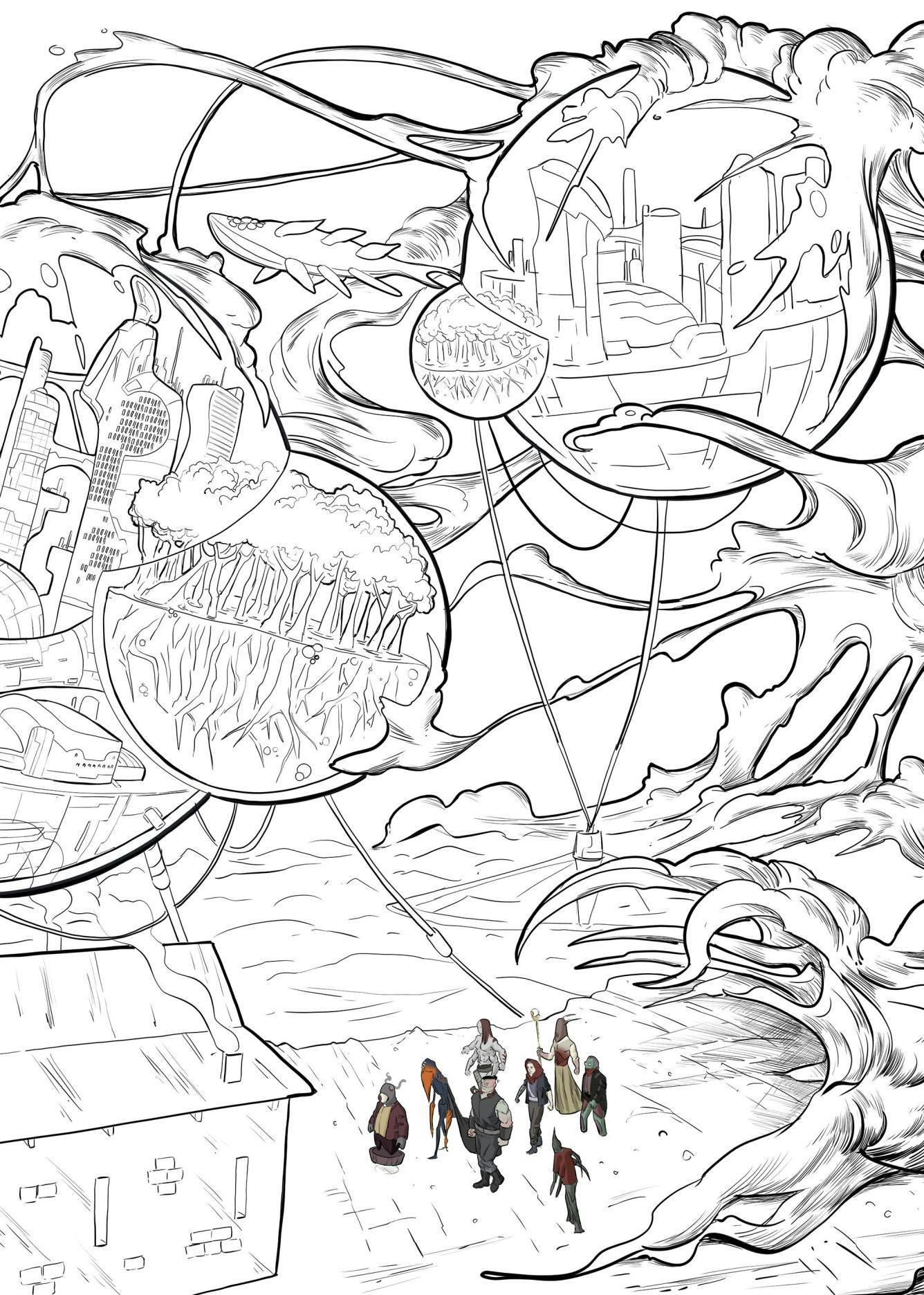
Our intention was to weave the green pill meme into the fabric of the graphic novel by incorporating an artifact that serves to catalyze characters into recognizing their capacity for personal transformation. This “artifact” (never clearly rendered or named) promotes principles of mutual support and cooperation and underscores the pivotal role of hope in shaping their actions. The characters are already endowed with the necessary resources, yet the artifact acts as a trigger, engendering an epiphany that bridges their prevailing egocentric tendencies with a more communal, future-oriented mindset. In this capacity, the green pill functions as a conduit between the virtual and physical realms. Despite its tangible presence, its ultimate purpose is to unlock the latent potential of the mind, akin to a pharmakon - a substance possessing the dual capacities to poison and heal. However, the green pill distinguishes itself from its counterparts in The Matrix and Alice in Wonderland, as it is imbued with a more nuanced, multifaceted, pluriversal symbolism.
The functionality of the green pill hinges on an element of magic, reminiscent of Aleister Crowley's definition of imposing one's will onto others from afar. The debate surrounding whether this constitutes manipulation or merely illusion is contingent upon the one’s capacity to dissect and navigate their own delusions. Both The Matrix and Alice in Wonderland scenarios pose inquiries regarding whether the experiences are shared hallucinations or individual delusions and whether escape is a decision of personal autonomy or collective consensus. Within the context of our comic, the green pill symbolizes a radical choice, a potent decision to accept hope, instigate personal transformation, and contribute to an uplifting narrative. It catalyzes an individual ontological shift with the potential to ripple across and influence the collective consciousness over time.
And now, allow us to walk you through the first comic we made for Gitcoin that attempted to fold this meditation on Moloch and the green pill into an artful narrative.
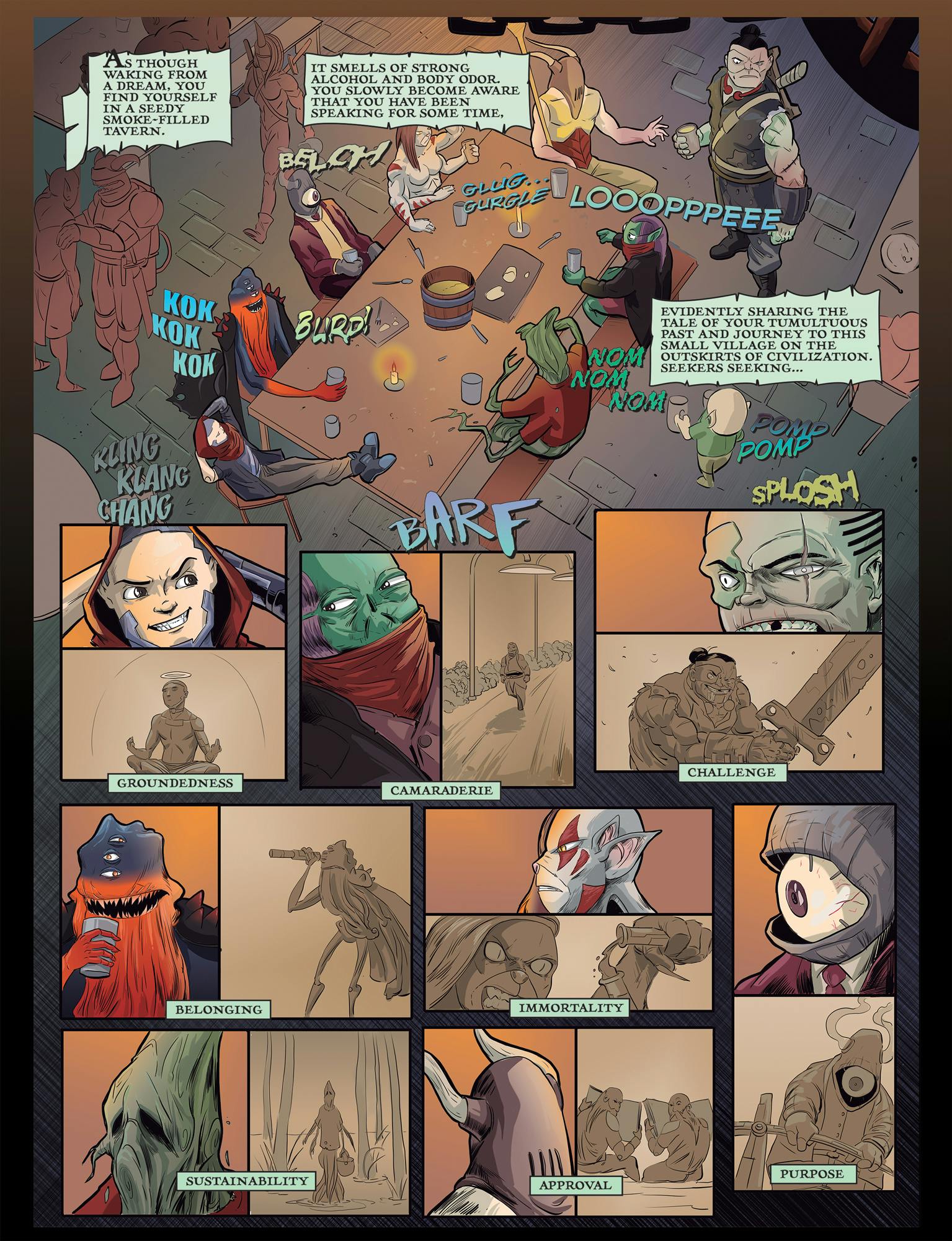
The opening scene is nestled within the smoky confines of a timeless tavern. A medley of diverse characters, each steered by the invisible compass of their singular ambitions, emerge from the shadows. The tavern itself is a breathing tapestry of raw emotion and whispered secrets, alive with the amber glow of flickering candlelight and the woody scent of worn-out barrels. This motley crew, tethered by a shared destiny they are only beginning to grasp, prepare to embark on an epic quest. Their camaraderie is palpable, their energy infectious, yet their journey is full of anticipation and uncertainty.
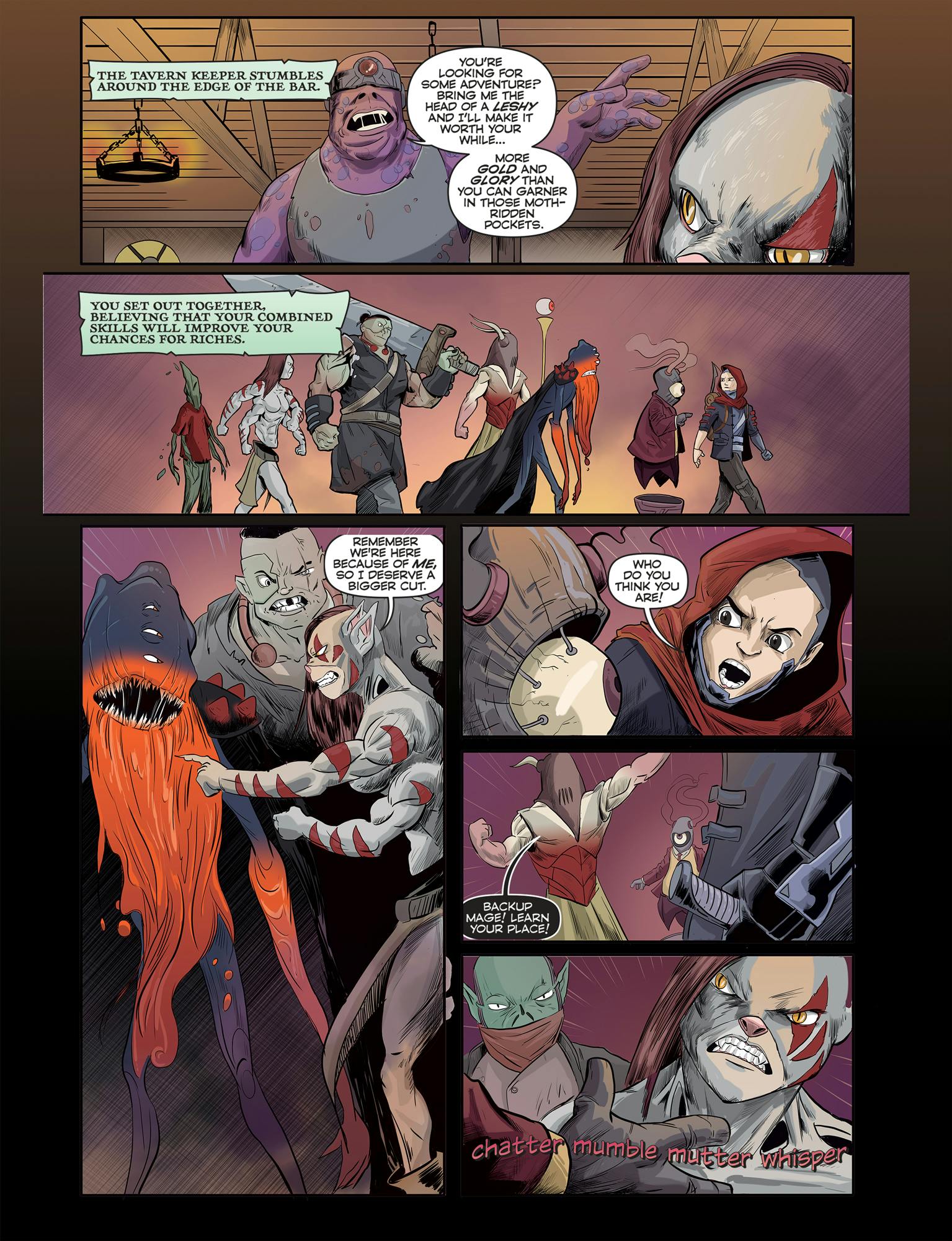
Venturing through eclectic landscapes, the characters' interplay becomes a theater of growing unease. Subtle tensions simmer beneath their exchanges, their once seamless camaraderie now laced with a disquieting undercurrent of suspicion and mistrust. These tiny fissures in their unity quickly grow into chasms, giving rise to heated bickering and vehement disputes that resonate in the air like discordant symphonies. A chilling transformation takes hold of the world around them as their turmoil escalates. A malevolent shadow begins to creep over the once vibrant landscapes, or perhaps it's the once vivid colors starting to leach away, replaced by haunting grayscale that mirrors their growing animosity. Moloch insidiously infiltrates their ranks. His invisible touch twists their words and manipulates their actions, their once noble speech now laced with hostility, their camaraderie crumbling into competition. Subtly, their values begin to warp and shift under his influence, driving them into a spiral of rivalry and antagonism, each character becoming a puppet dancing on the strings of this dark puppeteer.
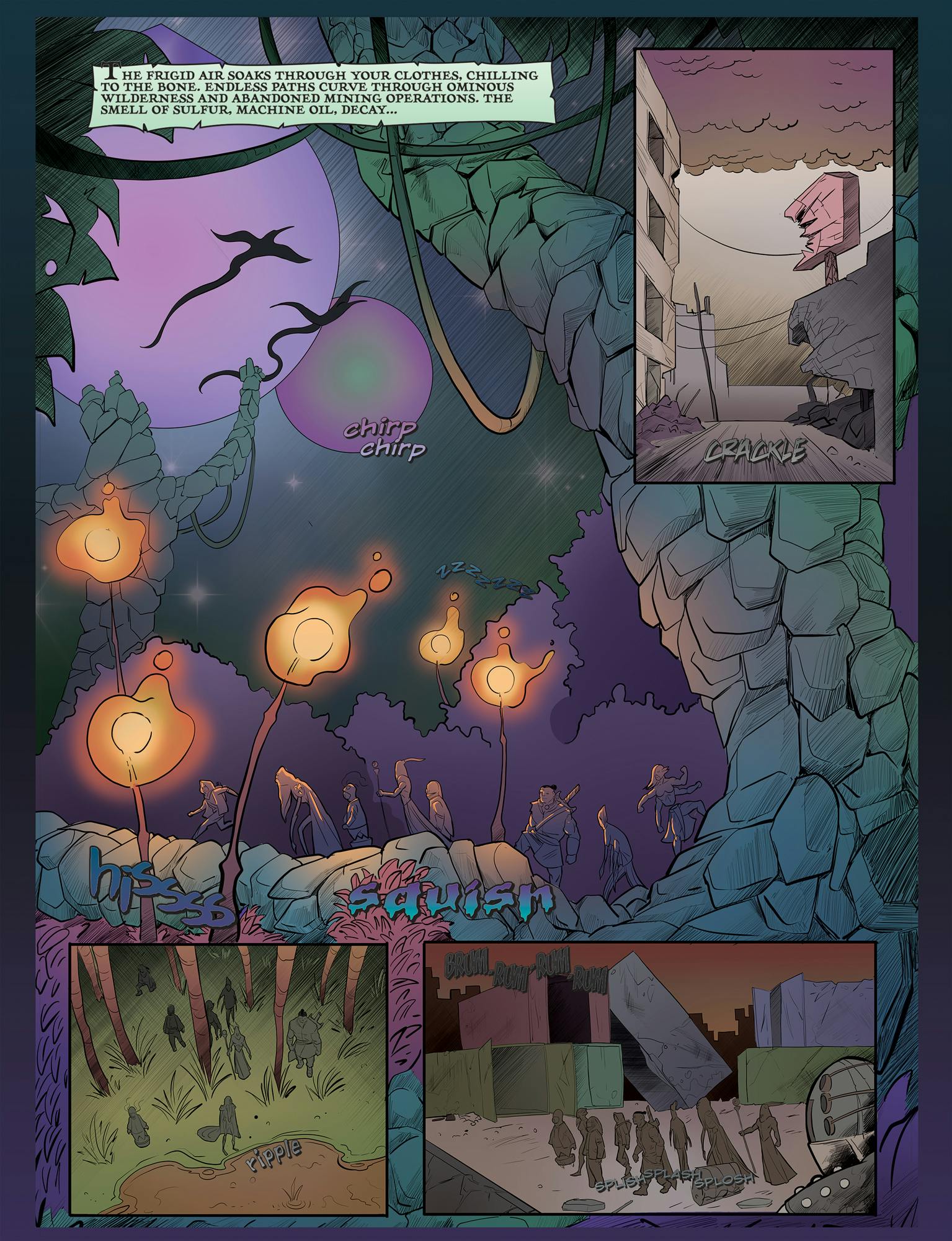
In a pivotal turn of the story, the Leshy emerges as a formidable presence, materializing from the verdant shadows of the wilderness, embodying the spirit of the ancient forest itself. Unmoved by the brewing storm of emotions amongst the group, the Leshy's voice resonates through the rustling leaves and the creaking boughs, a whispering echo of nature's wisdom. Its message is clear and undeniable: they have lost their way, consumed by misguided pursuits and clouded intentions. To triumph, they must unite against an ominous, impending doom that hovers ominously just beyond their perception.
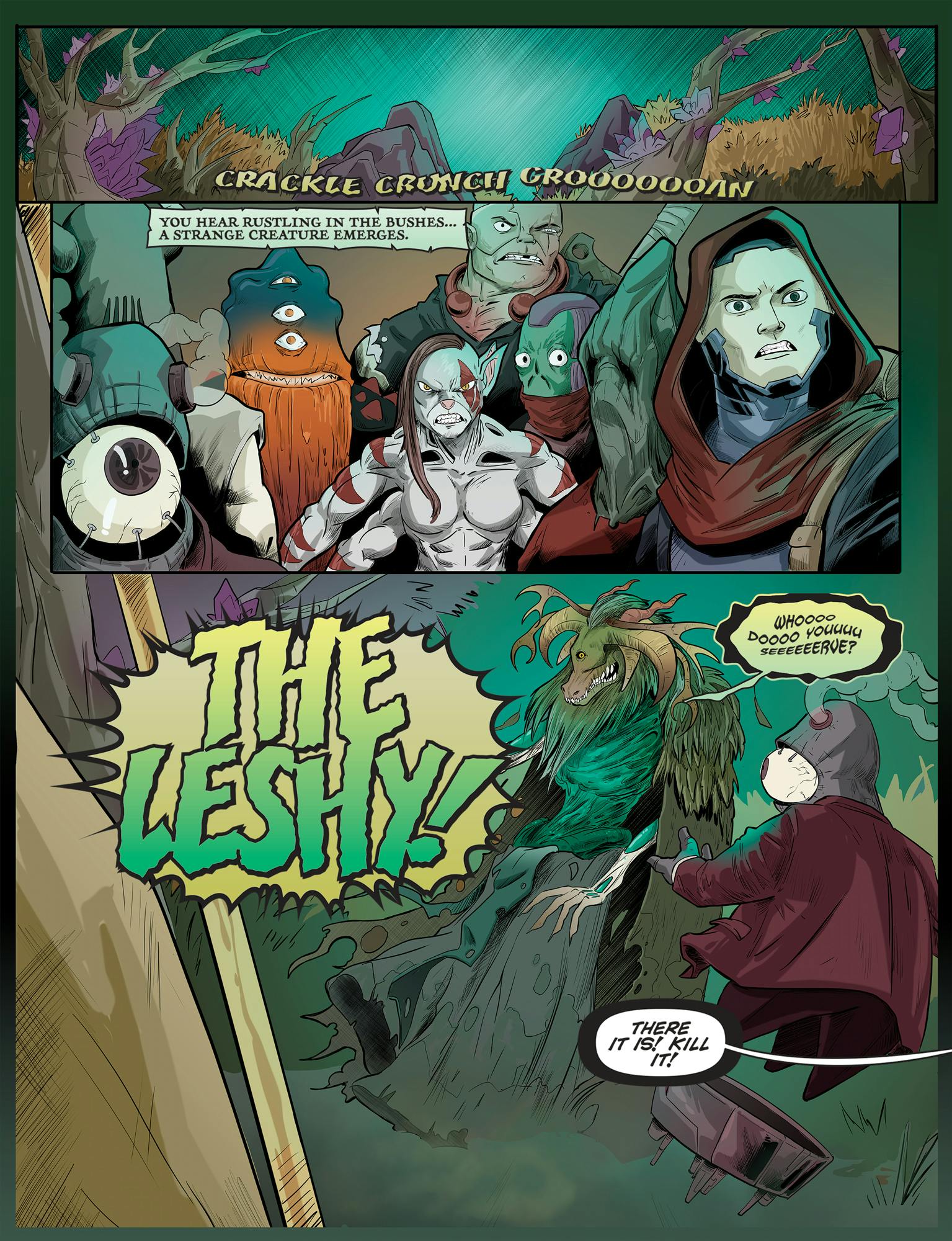
However, blinded by their own avarice, the mercenaries succumb to their baser instincts, engaging in a fierce clash not just with each other but with the darker aspects of their own selves. Each character flaunts their unique combat prowess, a dance of power and strategy under the canopy of the foreboding forest.
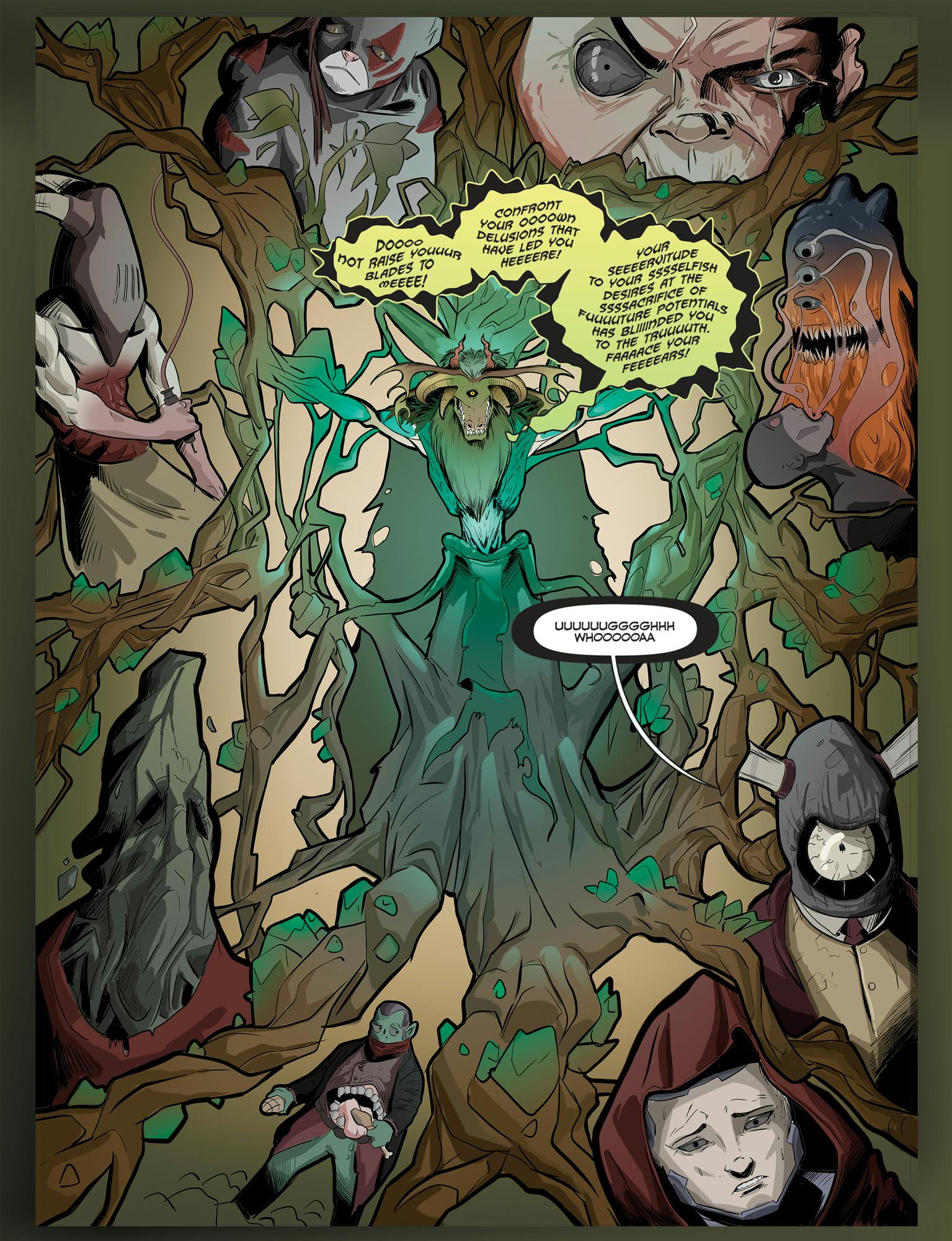
Yet the tragic, futile conflict casts a pallor over their features, altering their once vibrant postures into those of hunched and weary warriors. The vibrant hues of the scene steadily seep away, replaced by stark monochromes that mirror the growing despair in their hearts.
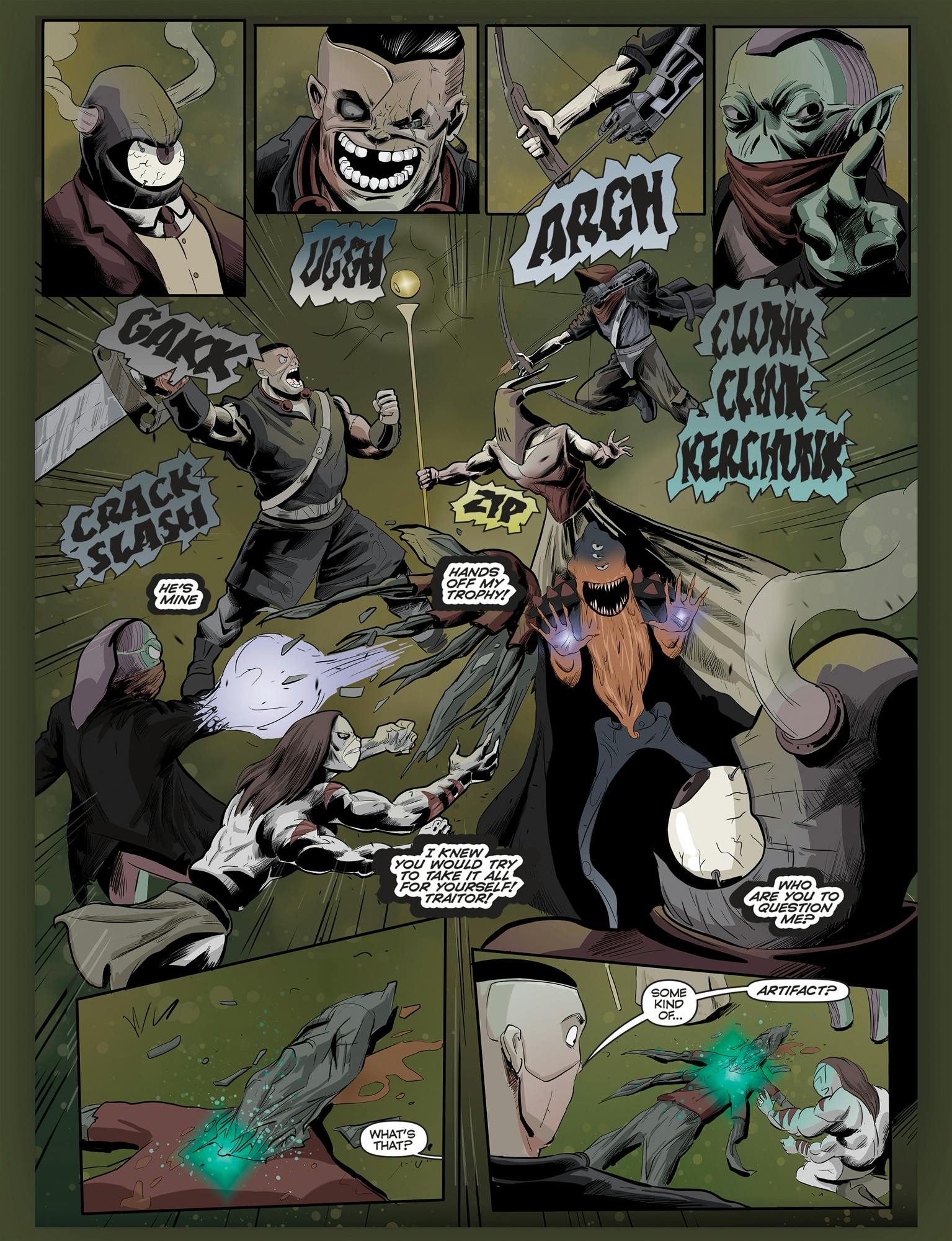
In the thick of their most despairing hour, a sudden burst of cosmic energy cleaves the air before them, tearing a rift in the fabric of reality itself. This ethereal portal pulses with a vibrant luminescence, an intriguing contrast to the shadow-drenched world from which they emerge, promising a glimpse into a realm beyond their comprehension. Peering through this swirling gateway of light and energy, they are greeted by a vision of their true destiny. There, spread out like a cosmic tapestry, lies the Quadratic Lands.
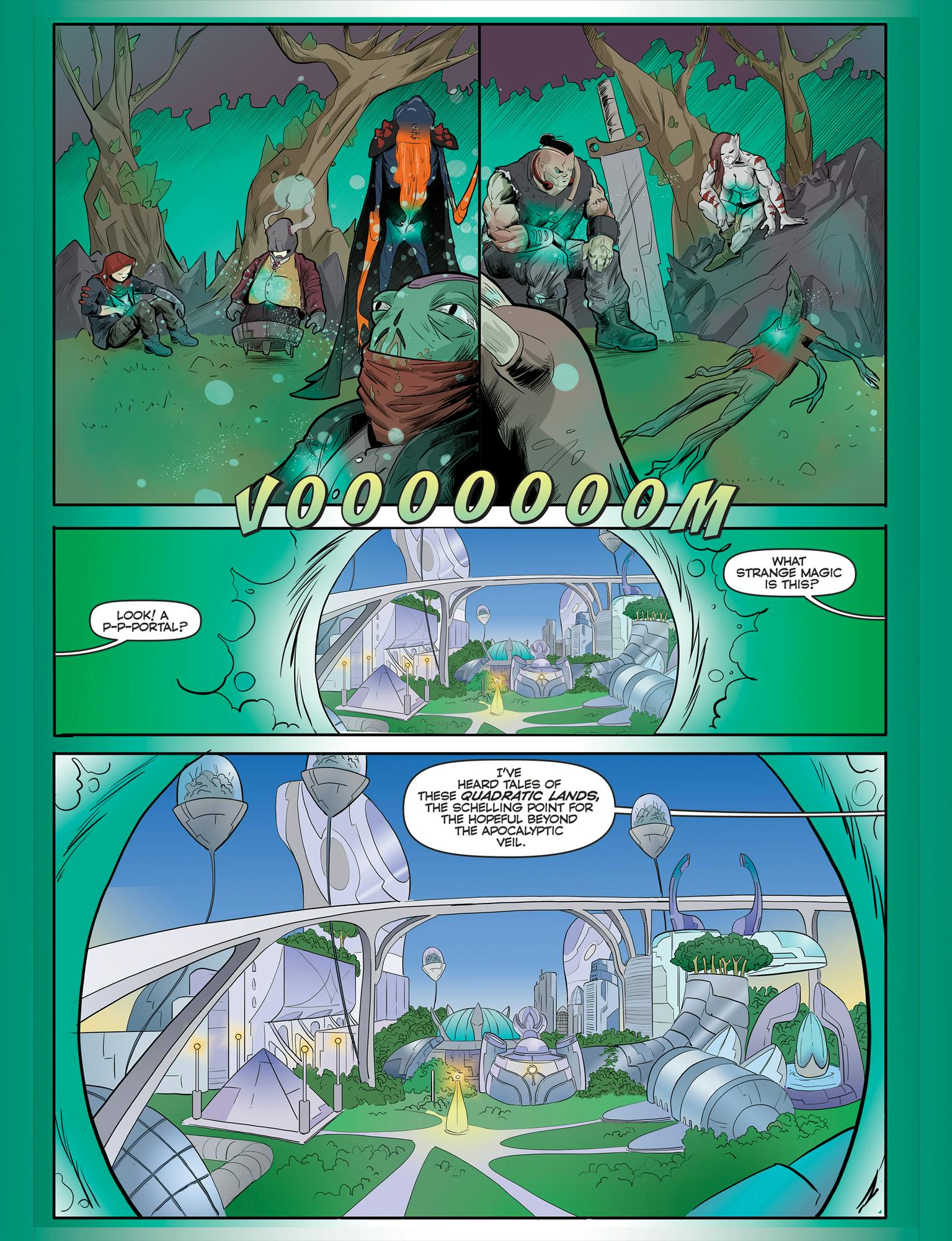
This world is a testament to the heights of advanced technology, where futuristic structures rise like glittering spires amidst a landscape of digital wonder, their surfaces shimmering with an array of iridescent lights. This world is a utopia of harmony, a stark contrast to their current strife-torn existence. Citizens move with a serene purpose, their faces etched with contentment, living amidst a seamless fusion of nature and technology. The sight leaves them awestruck, instilling a newfound resolve to fulfill their true purpose.
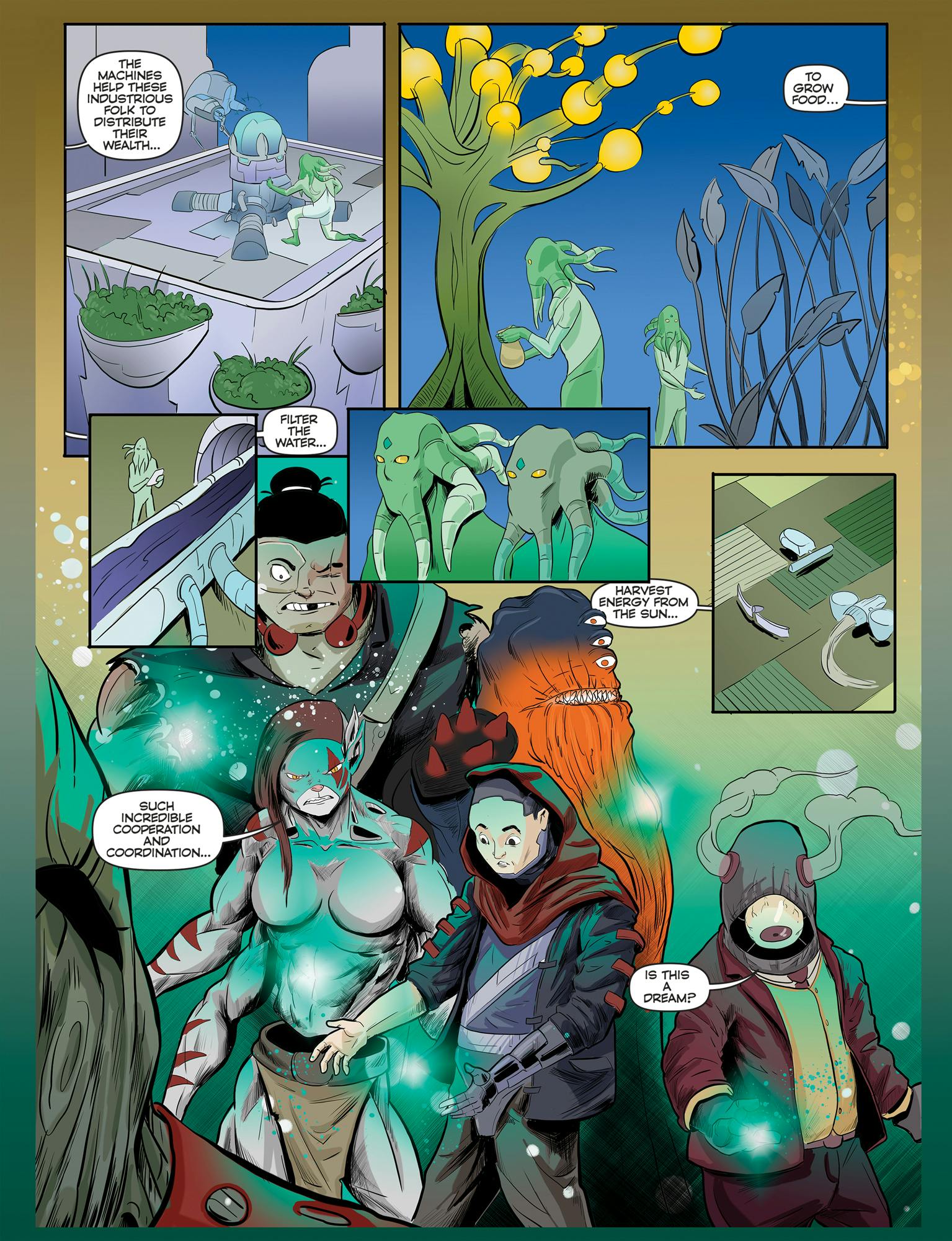
Yet, within this seemingly idyllic panorama, they spot an insidious darkness at play. A stark understanding descends upon them: they have been meandering through their journey like somnambulists trapped in a fever dream, mere pawns in a cosmic game. But now, the scales fall from their eyes, and they awaken to a reality that extends beyond the deceitful mirage that had ensnared them. Faced with this transformative revelation, the group stands divided at the precipice of choice. Some, driven by newfound clarity, step forward to embrace the beckoning portal, their silhouettes swallowed by the pulsating light. Others, still wary and suspecting further trickery, choose to remain behind, their suspicious gazes locked onto the enigmatic gateway. The once unified band splinters in two, a fracture line that runs deep, echoing the divide in their hearts.
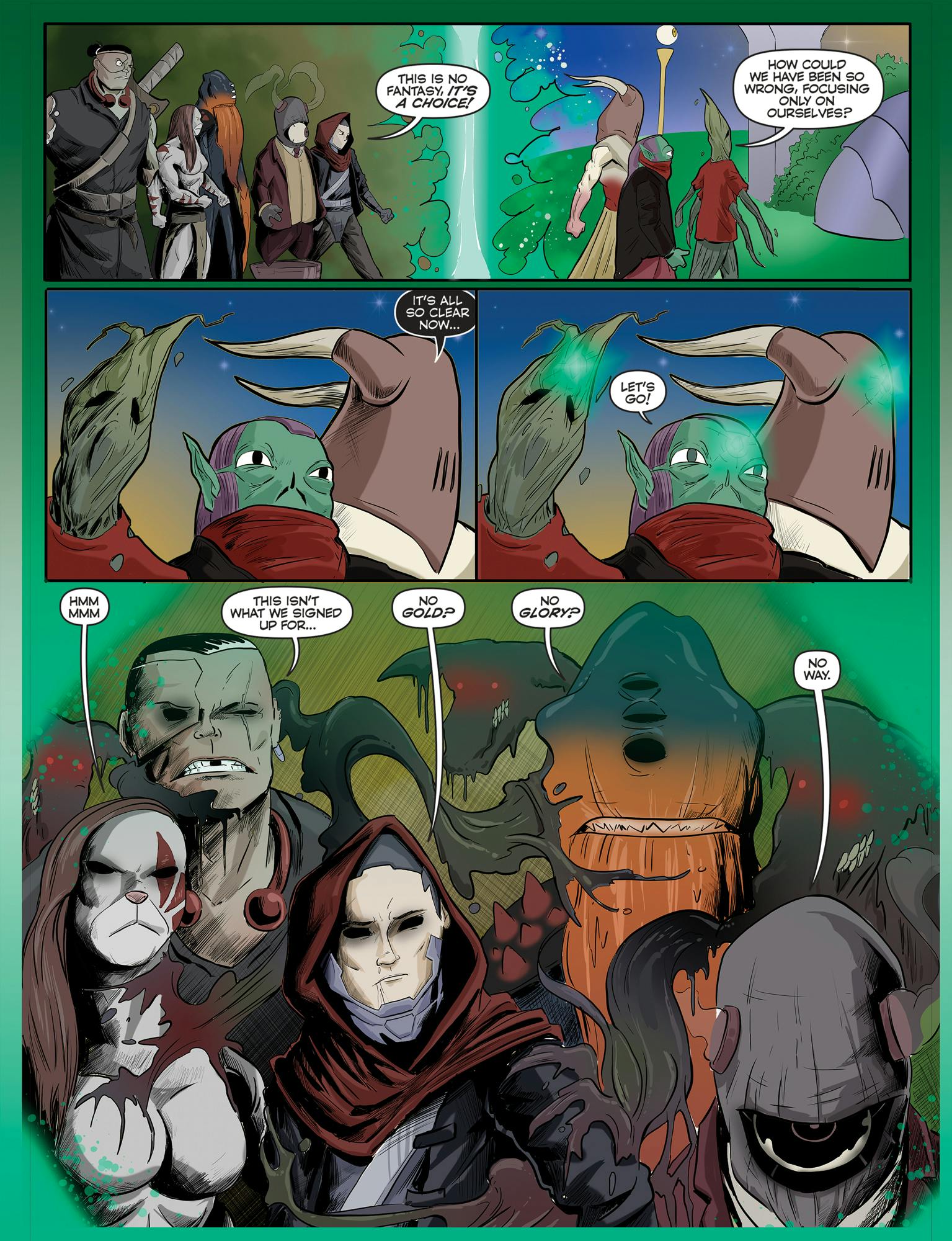
Having peered into the cruel heart of the phantasmagoric Moloch, the characters find themselves irrevocably altered, forever stripped of their blissful ignorance. Resolute, they return to the familiar, now uncanny, confines of the tavern, a newfound fire burning in their eyes. Their voices rise in warnings of the looming peril, their words echoing off the tavern's wooden beams, a chilling prophecy of the impending threat. Yet, their gift of sight, their revelation, is met with nothing but incredulous stares and dismissive scoffs. They stand amidst the tavern's bustling crowd, voices of truth lost in a sea of unbelief. Undeterred, they understand their path lies elsewhere now.
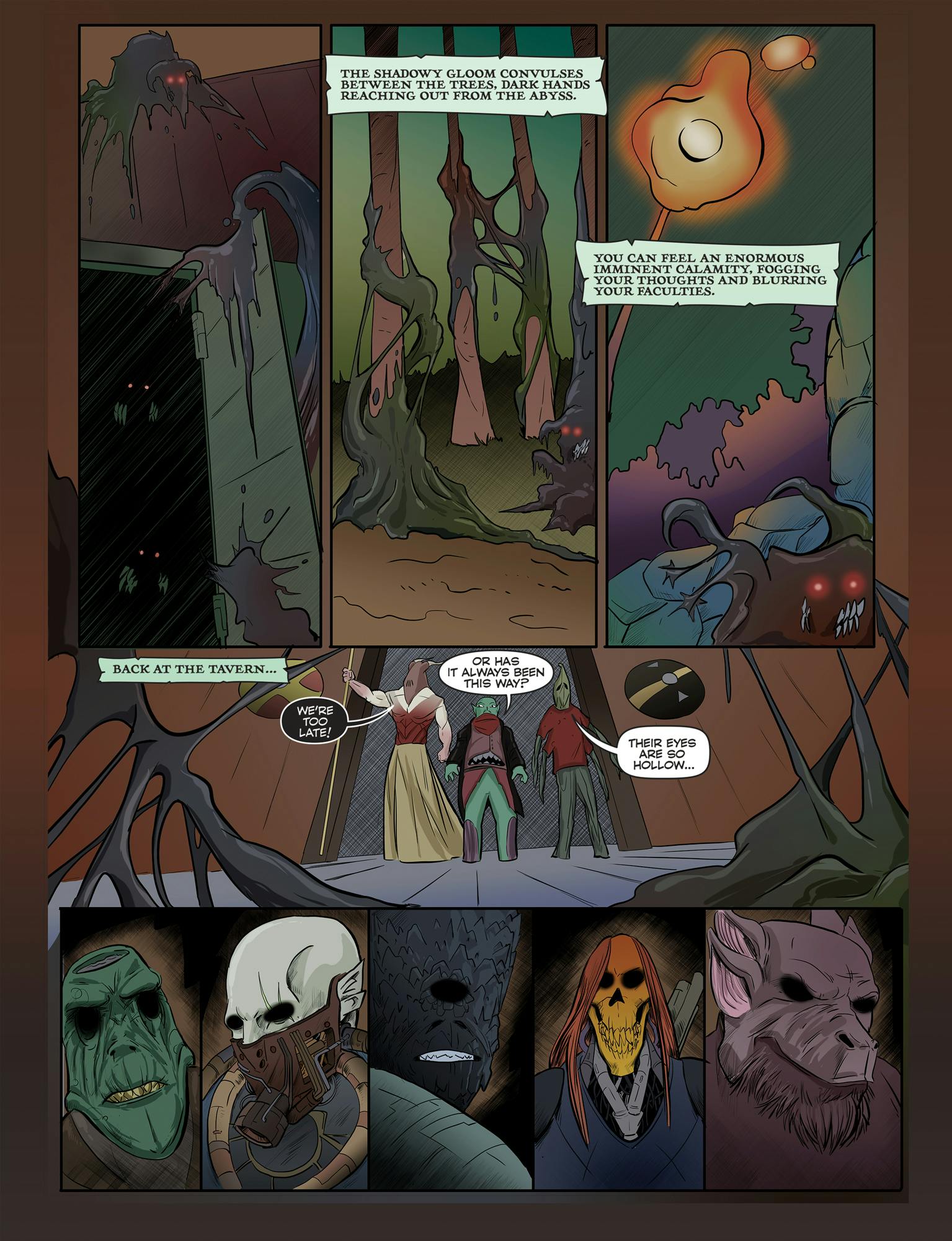
Their true mission, they discern, is to trace the malignant tendrils of the Moloch beast back to its insidious roots. The implications are profound, shattering their perception of reality. Could their entire world be just a virtual construct, an elaborate illusion woven by unseen puppet masters? They stand on the precipice of a new world, one they must explore and challenge. There is no turning back, only the path forward, into the heart of the unknown…
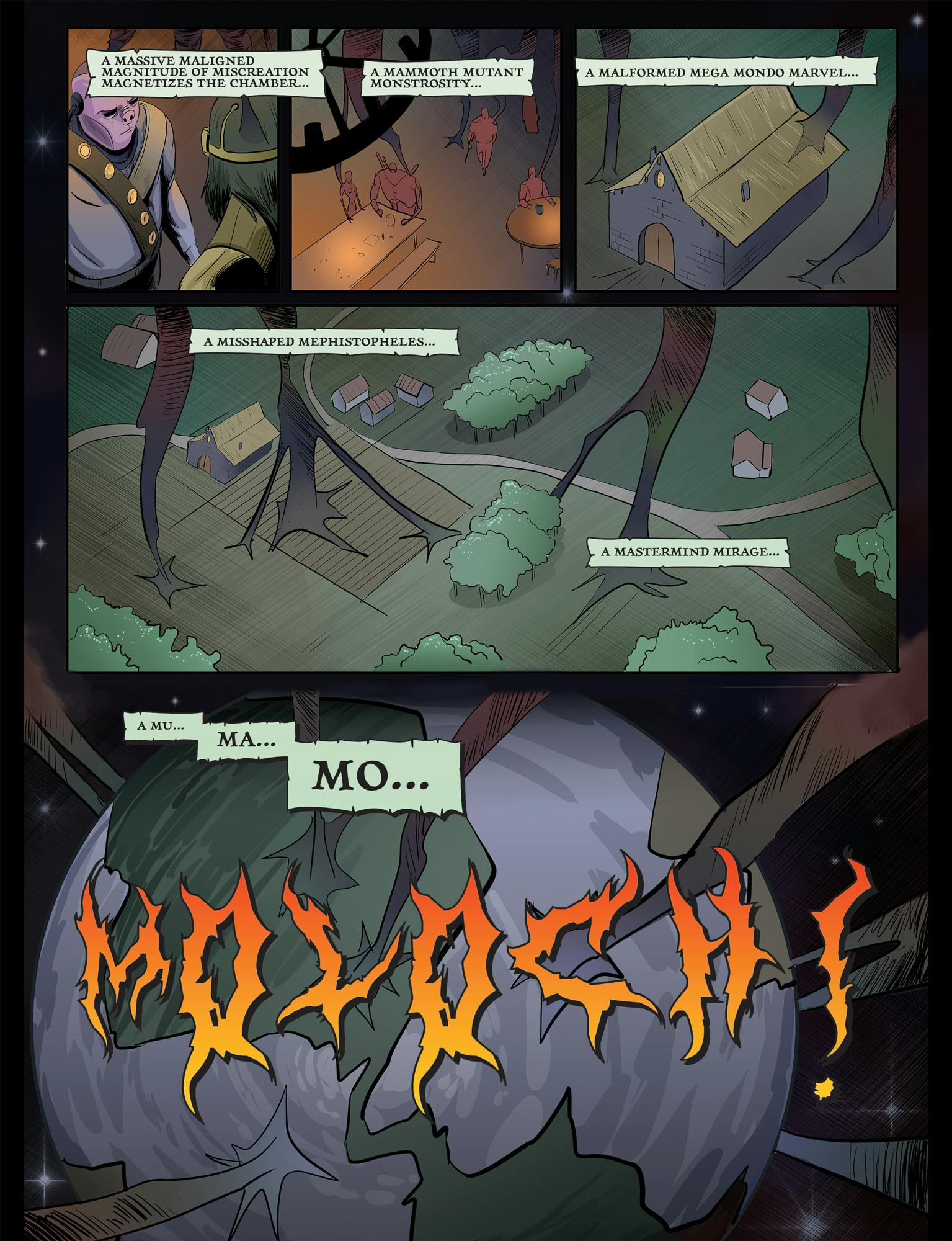
In our next article we will present the second graphic novel we wrote for Gitcoin titled The Nightmare of Moloch! Thanks for reading.